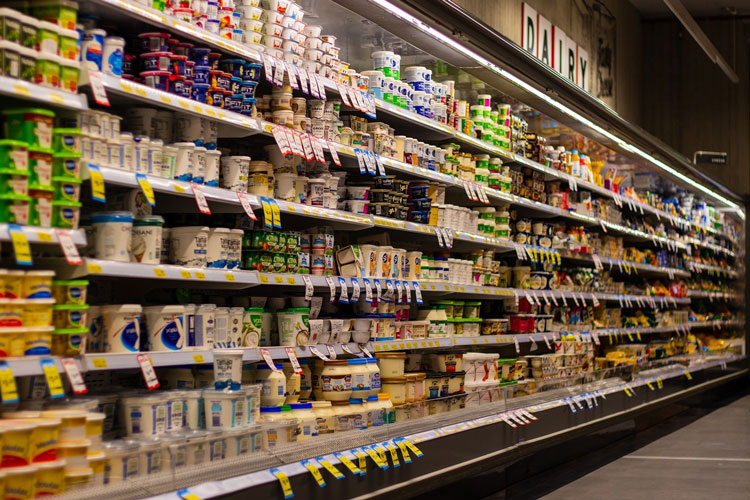
Grocery store customers rarely see the fluctuations in prices for their milk, cheese, butter, and other dairy products that dairy farmers experience in their payment prices. That’s largely because retailers engage in “price smoothing,” described Andy Novakovic on the March 24 Hoard’s Dairyman DairyLivestream.
“Retailers kind of tend to level out the ups and the downs and really don’t move prices unless they find themselves in a situation where they just can’t avoid it,” the Cornell University agricultural economist said. That means the price spread between retail and farm milk prices can vary widely as farm prices swing but retail ones remain mostly steady.
Grocers’ profits then also depend on the peaks and valleys of milk prices. When milk prices are low, they can make a reasonable profit. But when the milk price rises, that margin squeezes tighter, perhaps to not much at all.
Consumer perspective
Why don’t stores just raise (or lower) prices for consumers based on product cost? That’s a matter of consistency.
“The retailer has a [pricing] strategy that’s very customer-focused,” Novakovic said. “In that kind of environment, one of the last things you want to do is have some kind of ‘gotcha’ surprise with customers.”
Kroger wants to minimize disruption to the consumer because shoppers don’t like change, emphasized Mike Brown, who manages the dairy supply chain for the grocery giant. That need for stability is especially true for dairy because it’s one of the major categories drawing people to the store. Brown’s experiences with Kroger’s stores mirror USDA data estimating that over 90% of American households purchase cow’s milk.
He pointed out that when people stop at the store to buy fresh milk multiple times each week, they are often buying other products while they’re there. As grocery stores are competing with one another in their own market share, anything that gets consumers in the building is a win for the business. Though fluid milk returns the lowest margin of any product in the dairy case, it can make up for it when more money is spent on other items, Brown added.
To keep consumers coming back for milk – and cheese, yogurt, butter, ice cream, sour cream, and more – relatively consistent prices are a great sales tool.
“We’re driven by what the consumer wants,” Brown recognized.
An ongoing series of events
The next broadcast of DairyLivestream will be on Wednesday, April 7 at 11 a.m. CDT. Each episode is designed for panelists to answer over 30 minutes of audience questions. If you haven’t joined a DairyLivestream broadcast yet, register here. Registering once registers you for all future events.








